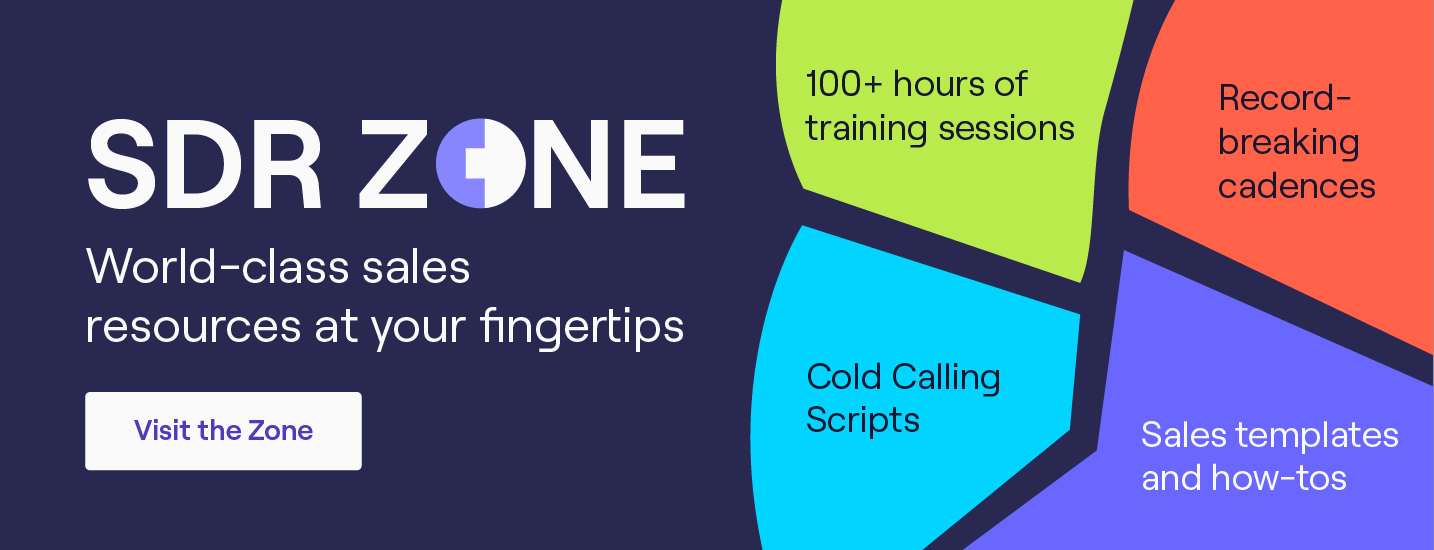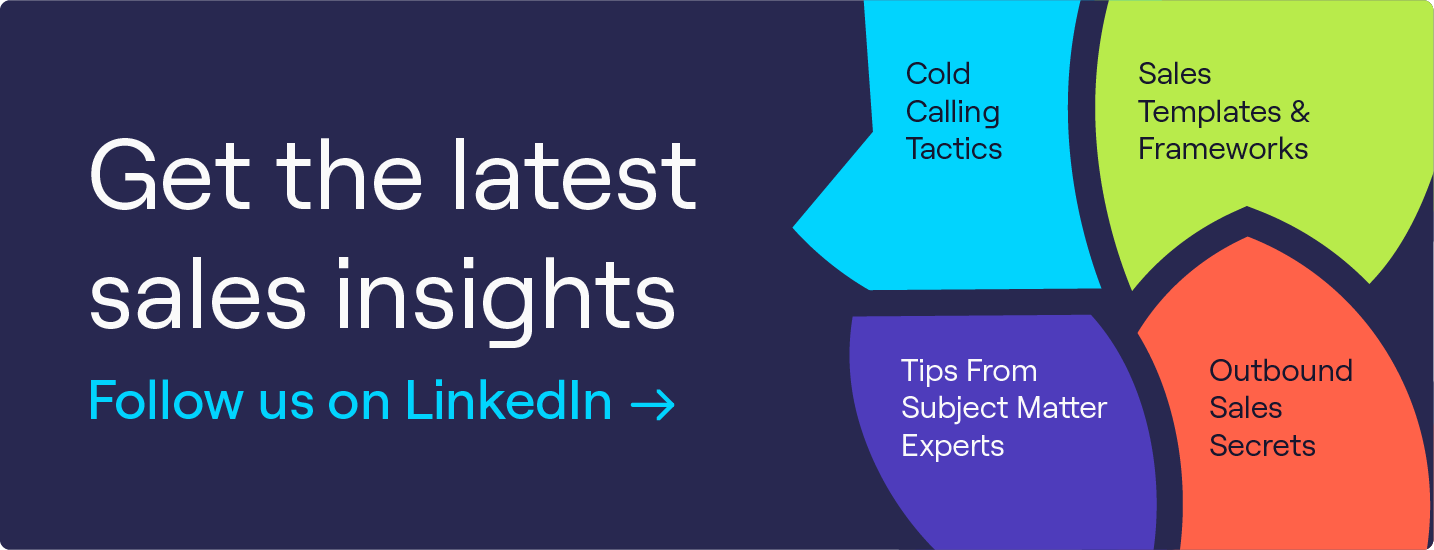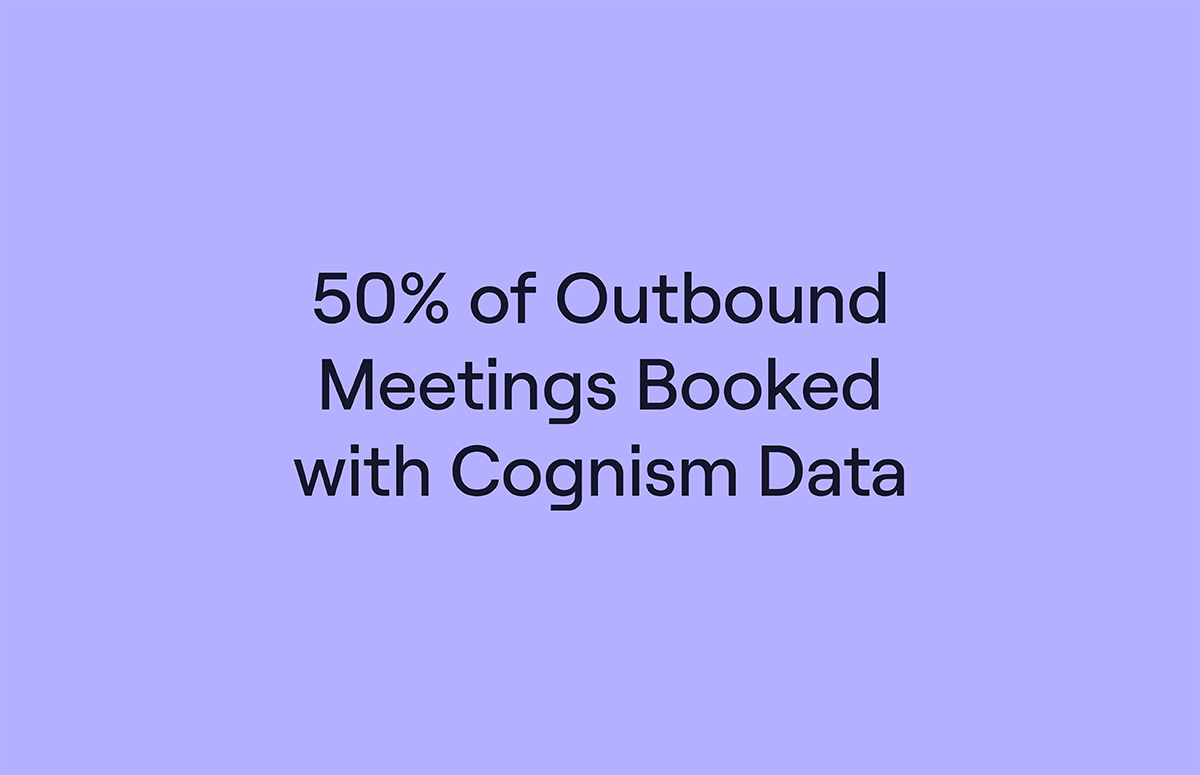From SDR to AE: How to Make the Leap
If you plug away at your SDR job, you’ll become an AE...
Is probably the worst advice you’ll ever hear in your sales career!
If you’re planning on becoming an AE, it doesn’t simply happen to you.
You’ve got to be hungry. You’ve got to want to learn. And crucially, you’ve got to prove that you’re ready.
But, how do you actually make that leap?
What happens while you’re ramping up?
And, what should you do once you become an AE?
To start, you should probably follow the advice of:
- Brahm Jagpal, Commercial Sales Manager and former AE
- Evie Crossland, Senior Commercial AE
- Ben Mouquet, Senior Enterprise AE
These AE sales superstars have made the leap themselves. In this article, they’re going to dish out all the tips you need to do the same!
Let's get started 👇
SDR to AE: How to make the transition
The best place to start?
With your eyes on the prize!
All three of our incredible AEs agreed that if you’re planning on leaping over to your AE role, as an SDR, you’ve got to…
Have a thirst for learning!
Brahm kicks us off in expanding on this:
“You’ve got to do this from the start. There’s always something you can be doing better. It’s very easy to just hit your lead generation metrics and then leave it there, but you’ve got to go above and beyond.”
“Realistically, if you want to get to the next level, you’ve already got to be operating at that level and this is where research is key.”
Ben agreed that learning everything will give you your best shot at getting into an AE position.
“You’ve just got to put your head down. Start with understanding your trade, improving your approach and finding your niche, and then - keep going! It all comes down to hard work and doing your homework.”
“Understand who your AEs want to talk to, who they’ve seen success with in terms of your products resonating with them.”
And then Ben suggests putting this into practice by looking at your existing clients.
Who’s signing with you? Get a list and then look for similar accounts and decision-makers. Once you have this, you can strategically target them.
And Evie?
Well, she was promoted from SDR to AE in just 11 months!
Why?
Because, like Brahm and Ben, she focused on learning everything she could.
Evie thinks the best route to becoming an AE is to plan ahead and pre-empt any internal recruitment.
“People think that when the email comes round from HR saying they’re recruiting for AEs is when you need to begin working towards this, but you should actually start much sooner than this.”
How did Evie do it?
“I was watching back all the discovery calls I could to pick up any tips or tricks that the AEs were using. I got really well-versed in what a demo should look like and carried this over when I moved to an AE role.”
“The main thing you need to do is be a step ahead. Think at least 3-4 months down the line and then learn all you can before you get there.”
Evie suggests you make time to review those AE calls.
But, to also look beyond your company’s resources. External courses can be helpful too.
There are so many different approaches to outbound sales. You want to see as many as possible because this will help you perfect your style.
Outside of learning, you’ve got to remember that being self-motivated is essential to climbing the sales ladder.
Don’t sit around and wait for your managers to notice you. Be proactive in making that next leap forward.
As Evie says:
“You’ve got to think on your feet and make yourself as valuable as you can. You’ve got to be as motivated as you can be - if you don’t have motivation as a salesperson, you’re never going to succeed.“
“If you’re just waiting around for people to give you everything on a plate, you’re never going to be able to challenge yourself and get to a higher position.”
Lastly, you’ll want to follow Brahm’s list for when you’re planning to make the transition.
“You’ve got to know what your strengths are and what you’re good at but you also need to know what you need to work on and develop - and then really start honing in on them.”
These are things like:
- Improving your confidence - working on how you come across on the phone when cold calling.
- Reviewing your email correspondence.
- Getting to know different solutions and technologies.
- Asking as many questions as possible - and remembering there are no silly questions!
Then there are skills that are more specific to an AE role:
- Learning how to do discovery.
- Learning how to conduct a B2B sales demo.
- Learning how to soothe B2B customer pain points.
A/B testing your approach is also something you should do as an AE.
Ben explains.
“It’s not necessarily about learning a model and repeating it. It’s about learning the model and then adapting it to a way that fits your personality.”
“Then, you’ve got to test it out, see what works, and then use the approach that gets you the best results.”
Now that you know how to begin the transition to your new role, you’ve got to think about 👇
How to juggle SDR work while ramping up
You might be juggling, but it doesn’t have to become a circus!
So, how do you find the balance between managing your current SDR role and preparing for your new role as an AE?
Firstly, you fulfil your SDR role.
Ben explains:
“When you’re ramping up, even though you’re in a transition period, you’re still an SDR. So, your focus should be on still hitting your targets and booking your meetings. If you’re about to be promoted, you’re more than capable of handling your work and ramping up at the same time.”
Ben suggests segmenting your day. Why so? It’ll help you get all of your tasks done.
The best way to do this?
Break your day up into blocks of time, divided between:
- Meetings.
- Cold calls.
- Follow-ups.
- Pipeline management.
This means you’ll be giving yourself an equal amount of time to focus on all these business-critical activities.
Ben says:
“You’re only going to have the odd meeting here and there in the beginning. This is a nice way to dip your toe in the water for the AE role, but also allows you the time to ensure you’re completing your SDR responsibilities.”
Evie agrees on prioritising your SDR role and completing those tasks.
And, on top of that, using your spare time to ramp up your AE skills.
“During my hour lunch break, I’d be watching demos - listening to how they were conducted and picking up on tips that could help me. There’s always something new to learn from different calls.”
“The most important thing is that I made time for it, and if you want to ramp up that’s what it all comes down to - making the time to do so.”
Evie reminds us that it’s all about keeping a balance.
You can’t let your actual job (as an SDR) fall by the wayside just because you’re ramping up.
You’ve got to continue performing as well as you did in the build-up to your promotion.
Outside of fulfilling your role, what else should you do?
Network!
Brahm explains:
“Yes, you want to make sure you’re doing your current job and performing well there. But, more than that, you’ve got to get to know people outside of your role. There’s no silver bullet in sales and everyone does things differently.”
“So, the more you’re networking, the more you’ll be getting to know other people’s styles and approaches to things. You’ll want to be building your network both inside and outside your organisation.”
Here are Brahm’s B2B networking tips:
- Work on building your SDR personal brand on social media, especially LinkedIn.
- Get used to doing presentations - guesting on webinars and podcasts will help you build confidence.
- Always get feedback and work on improving your skills - the more feedback you can gain, the more you’re going to grow.
Once you’ve covered how to ramp up, you’ll want to focus on what to do once you’re in your new role!
We’re not just talking about what’s on the job spec. There are lots of other things you need to know.
Ben, Brahm, and Evie gave us their 👇
Advice for your new AE role
Now that you’ve made it into the role you’ve been working so hard to get, you’ll want some pointers on how to handle it and settle in.
Let’s get right into it our top tips:
1. Don’t be afraid to review your calls
Brahm said:
“It’s the most terrifying thing in the world, and you’ll hate the sound of your own voice, but once you get over this hurdle, that’s when you’ll start gaining the most value.”
“If you think a demo went really well - listen to it again. If you think it didn’t go well, listen even more intently and go through it with your manager and mentor to get feedback. Then take on that feedback and work on improving right away.”
“The best skill to have as an AE is to be able to take on and action feedback as quickly as possible.”
2. Ask questions
Or to put it as Evie did:
“ASK EVERY QUESTION YOU CAN THINK OF! Don’t put yourself in a position of being asked why something wasn’t done and having to respond with ‘well, I don’t know’ - you’ve got to remember that everyone has been an AE for the first time.”
“Don’t be afraid to ask your manager or mentor for help, use your peers as support and to learn from, and use the resources around you.”
“You’ve also got to use your initiative. You can’t sit back and let things happen to you. Be direct and be assertive.”
3. Focus on yourself
Don’t look at what everyone else is doing; there’s little gained in comparing yourself to others.
Some people take longer to adapt than others to the AE role. But this doesn’t mean you’re failing.
Here’s Evie’s advice:
“If you start comparing yourself to others, you’re only going to get into a negative mindset. So, just focus on what you’re doing, work really hard, and ask for help when you’re struggling.”
4. Shift your mindset
As Ben said, you’ve gone from an SDR role where you’re constantly rejected, to an AE role where people are actually speaking to you.
So, you’ve got to make sure you shift your mindset accordingly.
“You’ve got to be confident above all else that your product is the right fit and be more confident in the warmer introduction that comes with being in an AE role.”
“Then, all you need to do are three things.”
Which are:
- Do what you say you’re going to do and do it on time.
- Be polite with your prospects, even when things aren’t going so well.
- Be someone the prospect wants to speak with.
And even though you’ve gotten to the AE role, you’ll still want to keep working on improving your skills.
How?
With Cognism’s help, of course! 👇



.png)
